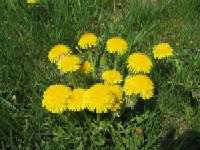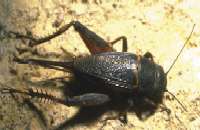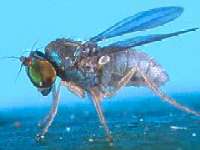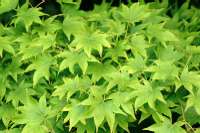|
|
 |
|
|
|
 |
| |
|
|
 |
Weather
Basics |
Short range forecasting using plant and animal behaviour
Can animals and plants help predict the weather or other natural events? There’s tradition that says they do – and, in some cases, scientists agree!
Dogs and cats seem to know when a tornado or earthquake is imminent. Birds roost early and feed extensively before rain or snow showers and pigs and squirrels gather more debris to insulate themselves from cold weather.
|
|
|
|
|
 |
Plants and certain fungi can accurately forecast wet and dry weather. Chickweed, dandelions, bindweeds, wild indigo, clovers and tulips all fold their petals up prior to rain. Rainstar, a type of fungus, opens up prior to rain and closes in dry weather. Mushrooms grow well when the weather is moist as do mosses and seaweeds. In fact, seaweeds exposed on the rocks at low tide seem to swell and rejuvenate in the high humidity conditions seen before wet weather.
|
 |
 |
 |
|
1. Dandelion flowers
source: http://www.flowersandfauna.com/dandelionphotos.htm
|
|
|
Some of the very old weather sayings related to plants and animals are given below along with short explanations why some of them actually work.
|
|
|
 |
Cat - "If cats lick themselves, fair weather comes."
During fair weather, when the relative humidity is low, electrostatic charges (static electricity) can build up on a cat as it touches other objects. Cat fur loses electrons easily, so cats become positively charged. Many cats don't like to be stroked when the air humidity is low as sufficient electrical charge can build up and cause small sparks which irritate the cat. When a cat licks itself, the moisture makes its fur more conductive so the charge can “leak” off.
2. source: http://www.thepetprofessor.com/
|
Crickets - Crickets are accurate thermometers; they chirp faster when warm and slower when cold.
This saying is extremely accurate. Count the cricket's chirps for fourteen seconds, then add forty. This is the temperature (in Fahrenheit) of wherever the cricket is.
|
 |
 |
 |
|
3. Cricket
source: http://hortipm.tamu.edu/pestprofiles/other/cricket/cricket.html
|
|
 |
 |
|
4. source: http://free-stock-photos.com/
|
|
 |
Flies – Flies bite more before it rains.
This rule does not always apply. However, insects do settle on objects more during moist weather as they find it more difficult to fly. High temperatures cause us humans to sweat more and this makes us a more appetising target to a fly. These two reasons, plus an increased release of body odour when atmospheric pressure decreases means that flies and insects are more bothersome just before it rains than at any other time.
|
Cow - A cow with its tail to the west, makes weather the best; A cow with its tail to the east, makes weather the least.
This New England saying from the USA has much truth in it. The natural instinct of animals is to graze with their tails into the wind. If a predator tries to attack from behind, the wind blows their scent to the animal in danger. In the northern hemisphere, east winds often bring rain and west winds often bring fair weather so the grazing animal's tail becomes a weather sign.
5. source: http://www.thepetprofessor.com/
|
 |
|
 |
 |
|
6. source: http://www.edenpics.com/
|
|
 |
Sea gull - "Sea gull, sea gull, sit on the sand; It's a sign of a rain when you are at hand."
Generally speaking, birds will roost more during low pressure conditions than during high pressure. Before a hurricane, large flocks of birds are seen roosting. Perhaps the lowering of air pressure or the decrease in the density of the air makes flying harder. Less natural air updrafts may also lead to the birds "resting it out."
|
Leaves - When leaves show their backs, it will rain.
When trees grow, their leaves make a pattern which depends on the prevailing wind. So when a storm wind blows (which is naturally in the opposite direction to the prevailing wind), the leaves are ruffled backwards and show their light undersides.
|
 |
 |
 |
|
7. source: http://www.freefoto.com/index.jsp
|
|
|
|
 |
Pimpernel - "Pimpernel, pimpernel, tell me true. Whether the weather be fine or no. No heart can think, no tongue can tell. The virtues of the pimpernel."
When the atmosphere reaches about 80% humidity, the bog pimpernel closes. So in other words, the scarlet pimpernel open when it's sunny, and closes when rain is due.
8. Scarlet pimpernel
source: Cornell University, Department of Plant Pathology, Itacha, NY 14863
http://vegetablemdonline.ppath.cornell.edu/
|
Compiled by Vera Schlanger - Hungarian Meteorological Service
Scientific reviewing: Dr. Ildikó Dobi Wantuch / Dr. Elena Kalmár - Hungarian Meteorological Service, Budapest
Last updated 2003-12-12
More about weather proverbs from:
http://www.wxdude.com/proverb.html
http://www.stalkingthewild.com/weather.htm
http://www.meds-sdmm.dfo-mpo.gc.ca/cmos/weatherlore.html
http://vathena.arc.nasa.gov/curric/weather/hsweathr/solutions.html
http://www.shoal.net.au/~seabreeze/weather.html
http://members.aol.com/Accustiver/wxworld_folk.html
http://www.windandweather.com/folklore/folklore8.html
http://www.pulseplanet.com/archive/Nov99/2007.html
|
|
 |
|







